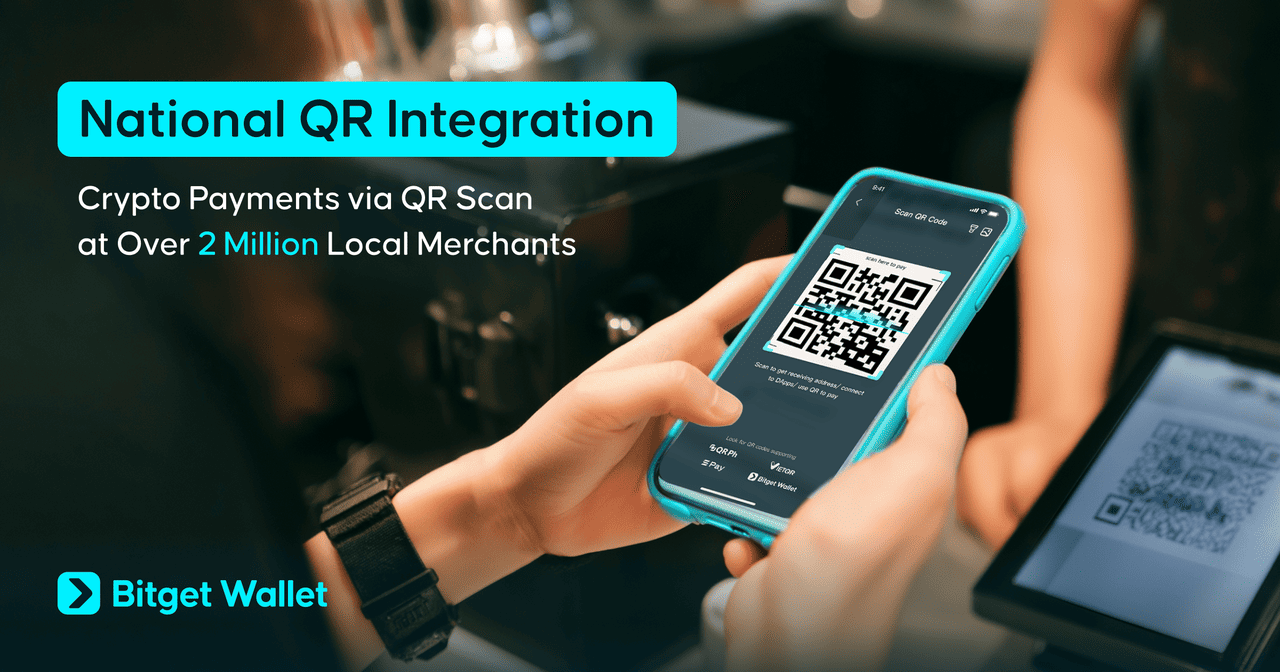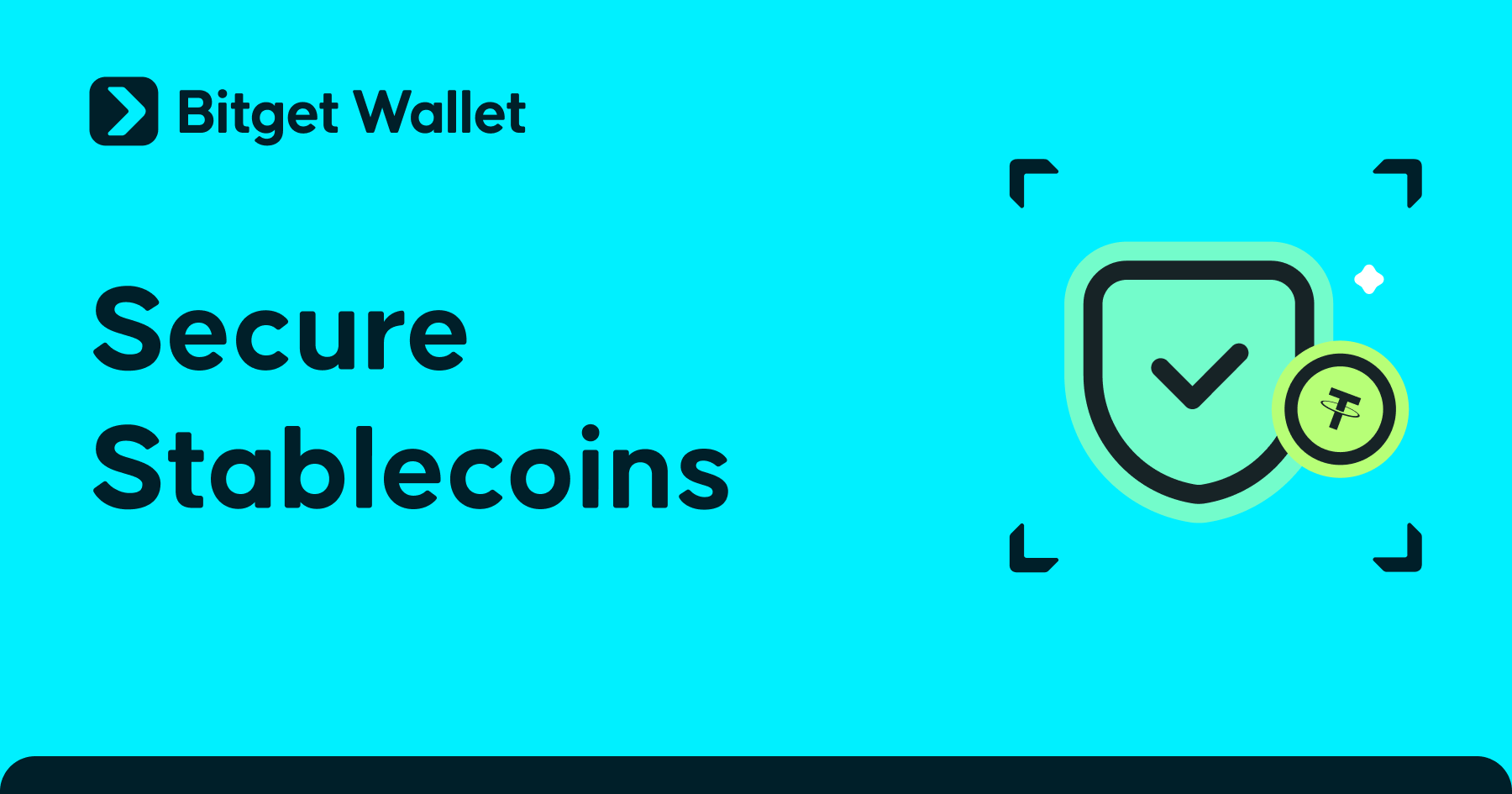QR Code Payment Trends You Need to Know in 2025
QR code payment has become indispensable in modern life. By 2025, it is no longer a fledgling technology - but has become a global standard for digital transactions. Thanks to its low cost, convenience and the ability to swipe your phone, QR is gradually replacing cash, credit cards and even traditional POS machines around the world.
This trend is extremely prominent in Southeast Asia, Latin America or emerging markets. For example, Vietnam, the Philippines, Brazil have used QR codes widely thanks to the supportive state system and young people who love technology. Even in places where financial infrastructure is lacking, like many regions in Africa, QR codes have paved the way for millions of people to access digital finance.
Entering 2025, a big turning point is coming: QR combined with cryptocurrency. Now, instead of just paying with regular money, you can scan QR - pay directly with coins/tokens. Leading this revolution is Bitget Wallet with its PayFi system: users spend crypto, shop owners receive cash - erasing the boundary between Web3 and real life.
QR Code Payment 2025: Why QR Code Payment Dominates in 2025?
QR Code Payment Growth by Region: A Global Overview
The surge in QR code adoption is not confined to one region—it’s a global movement. According to Juniper Research, QR transaction volume worldwide will reach $3 trillion in 2025, with over 2.2 billion users—nearly one-third of the global population. Southeast Asia leads with over 90% adoption, driven by countries like Vietnam, Thailand, Malaysia, and Indonesia.
| Region | QR Code Payment Overview |
| China | The pioneer of QR payments, with over 95% of consumers using apps like Alipay and WeChat Pay for daily transactions across all sectors. |
| India | The UPI QR system connects 350M+ users and 340M merchant QRs, making it one of the world’s most advanced interoperable payment networks. |
| Vietnam | QR payments grew 170% YoY in 2023, powered by VietQR and major e-wallets like MoMo, ZaloPay, and Viettel Money. |
| Philippines | Driven by the national QR Ph standard, QR payments are booming with 2.5M+ merchants and strong support from GCash and Maya. |
| Brazil | The Pix system processes 2B+ QR transactions monthly, supporting everything from street vendors to digital bill payments. |
| Africa | Despite infrastructure gaps, Africa’s mobile POS market is forecasted to hit $179.3B by 2028, with QR playing a vital role in boosting financial inclusion. |
From Asia to the Americas, QR codes have become a universal “payment language” for street vendors and corporations alike.
Which QR Code Type Is Better for Payments in 2025?
Both static and dynamic QR codes are widely used, but by 2025, dynamic QR codes account for 64% of the QR payment market due to superior flexibility and security.
| Criteria | Static QR | Dynamic QR |
| Content Modification | Fixed | Editable post-creation |
| Tracking & Analytics | Not supported | Real-time behavior and stats tracking |
| Data Security | Basic | Encrypted, tamper-proof |
| Use in Payments | Limited | Highly flexible, supports complex flows |
| UX Customization | Simple, low personalization | Advanced personalization & API ready |
Modern businesses prefer dynamic QR codes because they can integrate APIs, personalize user experiences, and analyze real-time payment data—especially useful in ecommerce, dining, retail, and QR for crypto payments.
Read more: What Is PayFi? A Guide to On-Chain Crypto Payments and DeFi Integration
How Crypto and QR Code Payments Are Merging?
How QR Code Payments Work for Crypto Transactions?
In a rapidly digitizing world, QR codes are proving to be the ideal bridge between Web3 and traditional commerce. Instead of building new infrastructure or changing consumer behavior, crypto can integrate directly into existing QR code payment 2025 systems.
A prime example is Bitget Wallet’s PayFi solution, already tested in Vietnam, the Philippines, and soon in Brazil. Users can pay at any merchant using native QR systems (like VietQR, QR Ph, or Pix) with crypto, while sellers receive fiat currencies like VND, PHP, or BRL.
How It Works:
- User opens Bitget Wallet and selects crypto payment
- Scans store’s QR code (e.g., VietQR or QR Ph)
- PayFi system interprets QR, routes via blockchain (Solana Pay, Lightning, etc.)
- Crypto is auto-swapped to fiat in real-time
- Merchant receives local currency, unaware of any crypto involved
The entire process occurs within Bitget Wallet—no need for third-party DApps or multiple platform logins. It’s a breakthrough that transforms crypto from speculative assets into real, usable currency.
Read more: What Are Crypto Payments? Crypto PayFi vs. Traditional Payments
Bitget Wallet Pay: Real-World QR Case Studies
Beyond storage, Bitget Wallet empowers users with Bitget Wallet Pay — a seamless QR-based payment feature designed for real-world crypto usage in markets where QR payments are already mainstream.
In Vietnam, the Philippines, and Brazil, users can scan QR codes at retail outlets, food stalls, taxis, and convenience stores using the QR scan feature inside Bitget Wallet — no card required.
Unlike traditional POS or card-based systems, Bitget Wallet Pay acts as a direct QR–crypto bridge: users simply scan the merchant’s QR code, choose a crypto asset (USDT, ETH, BGB...), and complete the transaction in seconds. The system auto-converts crypto into local fiat, such as VND, PHP, or BRL, so merchants receive the amount in their currency — no crypto exposure required.
Key Features:
- Native QR code scanning inside Bitget Wallet — no third-party app needed
- Instant crypto-to-fiat swap (supports USDT, ETH, SOL, BGB…)
- Integrated with major QR networks: VietQR, QR Ph, and Pix
For example, in the Philippines, Bitget Wallet Pay is enabling real-world crypto payments via QR Ph: users pay in crypto, and merchants receive pesos (PHP). In Vietnam, people use VietQR to pay for daily needs — utilities, transportation, food — all completed in seconds via a simple QR scan.
Download Bitget Wallet now and start using crypto for QR payments in your everyday life.

Common Problems with QR Code Payments
Key Barriers Slowing Global QR Code Payment Adoption
Despite their numerous advantages, QR code payments still face several challenges that hinder widespread adoption across the globe:
- Lack of stable internet connection:
In rural or remote areas, poor internet access prevents QR code usage, especially for real-time verification. - Elderly and non-tech-savvy users:
Many still hesitate to use smartphones or lack the knowledge to scan codes and navigate payment apps. - Fraud and spoofing risks (quishing):
Hackers can place fake QR codes over legitimate ones to steal funds or redirect users to malicious sites. - Low awareness in emerging markets:
In many rural regions, people are unfamiliar with QR code adoption or don’t see clear benefits. - Infrastructure gaps:
Lack of investment in QR POS system support—such as APIs, training, or customer service—makes adoption hard for small businesses.
While these issues are real, they are not insurmountable. Governments and fintech innovators are actively pushing QR code adoption as part of the next-generation financial infrastructure. More importantly, integrating with crypto can offer solutions to bridge these gaps faster.
How Crypto and Web3 Can Help Overcome These Challenges?
Crypto and Web3-native features are uniquely suited to address current limitations of QR code payment 2025 systems:
- Decentralization:
No reliance on banks or intermediaries—users transact directly via crypto wallets. - Smart contract security:
Reduces fraud risks with tamper-proof, transparent transaction logic. - ID-free payments:
Eliminates complex KYC steps; users only need a crypto wallet to pay.
Additional technologies are also being used to enhance QR for crypto payments:
- Two-factor authentication (2FA):
Ensures the scanner is the legitimate account owner. - Biometric verification:
Uses fingerprint or facial recognition for secure access. - Offline QR fallback:
QR codes can be stored locally to enable transactions without internet. - Offline sync:
Transactions are processed once network connectivity returns.
Bitget Wallet’s PayFi initiative exemplifies how Web3 innovations can solve real-world issues. Not only does it support QR code payments, but it also offers robust security features and compatibility with various local QR ecosystems.
Read more: PayFi Benefits and Advantages: What is PayFi Crypto?
What’s Next for QR & Crypto Payment: A 2025 Forecast
How QR Codes Are Evolving: Payments, Identity & Rewards?
From 2025 onward, QR payments will expand beyond simple transactions. QR codes are becoming a multi-functional tool supporting Web3 identity and on-chain rewards.
Emerging use cases:
- QR staking: Users can stake tokens by scanning a QR code—ideal for onboarding Web3 newcomers.
- On-chain rewards: Users scan QR codes at events, stores, or online to receive NFTs, airdrops, or loyalty points instantly.
Bitget Wallet is actively developing these features as part of its PayFi strategy. With integration across payments and on-chain interaction, QR codes may soon become a universal key to access Web3.
QR Use Cases: 2025 → 2030
| Year | Primary QR | Use Case Description |
| 2025 | Crypto → Fiat Payments | Scan QR to pay in crypto, merchants receive fiat instantly |
| 2026 | Simple QR Staking | Stake tokens into DeFi pools via QR scan |
| 2027 | NFT Rewards | QR on products or tickets unlocks NFTs |
| 2028 | Web3 Identity via QR | Connect wallet and verify identity without passwords |
| 2029 | Multi-chain QR | One QR connects to multiple blockchains |
| 2030 | All-in-One QR | Payments, login, ID, and rewards in one QR interface |
Final Thoughts
In 2025, QR code payments have become the global standard, especially in Asia, Latin America, and emerging markets. Their convenience, low cost, and ability to scale make QR codes easier to adopt than traditional digital payments. But it is the fusion of QR payments and crypto that is pushing the Web3 revolution into everyday life. When users can scan one code to pay with crypto, stake tokens, or earn on-chain rewards, the boundary between the digital and physical worlds disappears.
Bitget Wallet is leading this transformation through its PayFi infrastructure and real-world deployments across Vietnam, the Philippines, Brazil, and beyond. Download Bitget Wallet today to scan, pay, and step into the future of Web3 payments!
FAQs
1. Are QR crypto payments secure?
Yes. Bitget Wallet uses multiple layers of protection including 2FA, biometrics, and smart contracts to ensure secure and transparent transactions.
2. Can I scan any QR code with Bitget Wallet?
Bitget Wallet supports major traditional QR systems like VietQR, QR Ph, and Pix. With PayFi’s smart routing, you can make QR for crypto payments at millions of local merchants without changes to existing infrastructure.
3. How can I join PayFi early?
Download Bitget Wallet and register for PayFi access. Early users receive exclusive benefits such as cashback, airdrops, and early invites to Web3 campaigns.
Risk Disclosure
Please be aware that cryptocurrency trading involves high market risk. Bitget Wallet is not responsible for any trading losses incurred. Always perform your own research and trade responsibly.
- What Is Crypto Fear and Greed Index: How Traders Read Fear vs Greed Signals2025-11-19 | 5 mins
- How to Pay with Crypto: Fast, Safe, and Beginner-Friendly Method2025-11-18 | 5 mins
- How to Convert Your Crypto to Cash: 5 Easy Ways for Beginners2025-11-18 | 5 mins


















